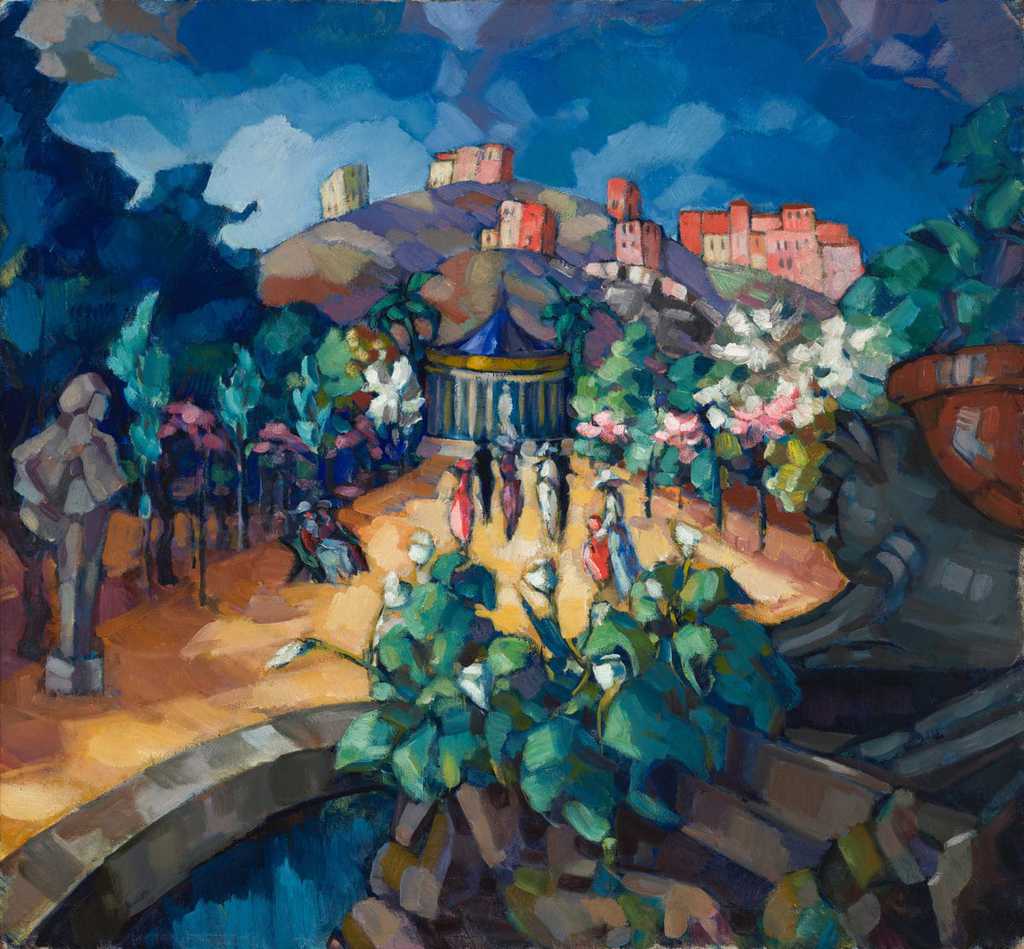
Some Italian specialists who have provided consultation for the collection have indicated that it could be a view of Naples. As far as is known, Mägi did not stop for particularly long in that city, using it only as a brief stopover before the departure of the ship from the harbour of Naples that took him to Capri (or which brought him back from Capri). The confusion in precisely identifying the city that has been depicted is yet another example of how the question for Konrad Mägi never lay in the recognisable simulation of something. The question of Rome or Naples was of no importance for him since he was interested in far more abstract values. We see very strong references to metaphysics in this painting, since the horizon ends with hills towering on the background of a dramatic dark blue sky, with glowing red houses depicted with black slits on those hills. The complex of buildings on the right-hand side in the background seems particularly strange. It is far from admiring the city’s distinctive architectural features and speaks of ‘space’ at a far more abstract level, resembling elements from the paintings of the famous metaphysical painter Giorgio de Chirico. A corridor with walls formed by park trees planted on the right and left-hand sides directs the viewer’s gaze to the houses. People – so rarely encountered guests in Konrad Mägi’s works – walk between those trees, yet their backs are turned to us. They do not seek contact with our everyday reality, rather they wish to be part of a new painting reality. An altogether strange fountain towers in the painting’s foreground and it rhymes visually with the circus building at the end of the corridor but regardless of this, its placement in such an important position is astonishing and raises questions. This painting, like so many paintings in Konrad Mägi’s oeuvre, is filled with enigmas, which perhaps were not consciously constructed. We do not have to delve into secret teachings to solve them since these are enigmas that have arisen organically in the course of painting: why such a viewpoint? Why such houses? Why this kind of space?